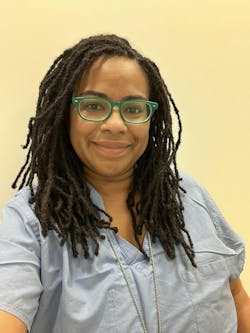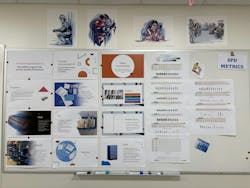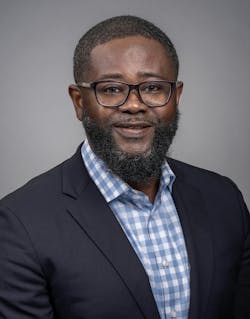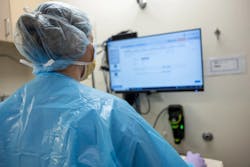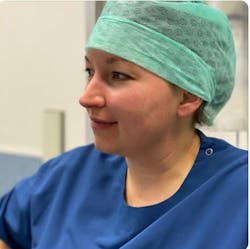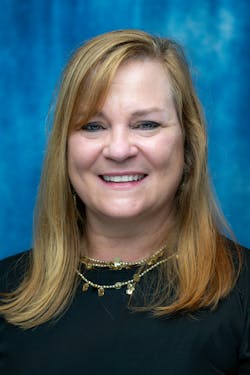Evolving Education in Sterile Processing: Modernizing Learning, Elevating Confidence
The sterile processing department (SPD) sits at the heart of safe surgical care, yet its educational needs have often been sidelined. Today, increasingly complex devices, rising case volumes, and evolving standards are driving a transformation in how SPD professionals are educated and trained.
SPD leaders, educators, and vendors are responding with accessible, tech-enabled, and highly targeted learning programs. As a result, SPD education is shifting from occasional and burdensome to intentional and empowering.
HPN interviewed SPD education experts across these groups to gain best practices in SPD education, including what works, what doesn’t work, and how to drive advancements in this area forward. We share success stories and lessons learned from three U.S. healthcare organizations: The MetroHealth System, Nemours Children’s Hospital, and OhioHealth.
The rise of dedicated SPD educators
With the complexities of sterile processing and the ever-changing guidance and standards, it would seem the role of SPD educator would be prevalent throughout U.S. health systems and hospitals. But historically, many SPDs have lacked somebody in this role to guide staff education and training.
A certified sterilization technician from a health system in the Northeastern U.S. commented on challenges technicians face when pursuing continuing education opportunities, stating:
“I feel that the challenges to SP techs sadly often come from within the facilities where they are employed. Even just completing the basic required CRCST certification sometimes results in a lot of red tape to be reimbursed. Techs desiring to go further don’t always have the support unless they do it on their own.”
She expressed the need for healthcare facilities to support other types of SPD education as well, “such as funding for attending seminars, conferences, and activities to promote networking with other techs.”
Within some health systems and hospitals, the tide is turning toward greater support for SPD education. As more healthcare organizations place greater value on sterile processing and its role in patient care and safety, they are establishing full-time educator positions. The following are stories from two U.S. healthcare organizations.
Expanding the scope of learning: Continuing education at MetroHealth System
Becoming an SPD educator has long been part of the career plan for Janene McGlynn, CRCST, CIS, CER, CHL. After spending nearly a decade in the sterile processing profession, she finally saw her opportunity when The MetroHealth System in Cleveland created its first SPD educator position.
As the first person in this role, McGlynn faced understandable skepticism. Staff weren’t sure what to expect. “There was a lot of, ‘What’s your function? What do you actually do?’” she said. “And that was understandable because no one had done this here before.”
McGlynn brought experience from multiple hospitals, including those with and without SPD educators. She knew that an educator’s role could look very different depending on the department’s culture, leadership, and expectations.
“In some places, the educator just managed onboarding paperwork and relied on vendors to handle continuing education,” McGlynn explained. “In others, the educator created custom in-services and secured certification for continuing education units (CEU). And I’ve been in places where the educator existed in name only—no one really saw them. It goes to show how there’s no handbook telling you what an SPD educator should do. It’s up to you to figure it out.”
At The MetroHealth System, continuing education had traditionally been managed by SPD leadership who selected vendor-led in-services a year in advance. McGlynn has taken a different approach. Her goal has been to expand CEU access while keeping learning manageable.
“I bring in vendors once a month who offer CEUs that are accredited by the Healthcare Sterile Processing Association (HSPA) and CBSPD,” said McGlynn. “That way, I know staff are covered on all fronts.”
McGlynn is a firm believer that education should reflect how people actually learn. “My team isn’t into games or team-building-style sessions. If I did that, they’d just stare at me,” she joked. “SPD education is about being flexible and understanding your department—what they're willing to do, what they're not going to do, and customizing a program for them.”
She surveyed her staff to understand their learning preferences and gaps, creating QR code-based CEU resources so staff can engage with training on their own time. She also distributes vendor-provided in-service information to maximize flexibility.
“It’s all about meeting people where they are,” she added.
Empowering education through ownership: GEMBA rounds at Nemours
“When a hospital creates a sterile processing educator position, it demonstrates the value of the SPD to the organization, underscoring what our profession stands for and the level of competency in our work,” said Nemours Children’s Hospital’s sterile processing supervisor of education Jean-Philippe Grunderson, MHA, CRCST, CIS, CHL, CER.
In collaboration with the hospital’s assistant vice president (AVP) of perioperative services & SPD, DV, Edna Gilliam, DNP, MBA, RN, CNOR, NEA-BC, and sterile processing department manager Kwame Addomah Gyabaah, MHA, Mini MBA, BS, ACHE, CHL, CER, CIS, CRCST, Grunderson is redefining SPD excellence through Lean thinking and frontline ownership.
To educate SPD team members on industry best practices and spark meaningful improvements, Gilliam, Grunderson, and Gyabaah instituted GEMBA rounds—an approach rooted in Lean and Six Sigma methodologies. Instead of leadership selecting which improvements to pursue in the SPD, they empowered a group of technicians to take ownership—tasking them to identify two process issues and one safety issue they wanted to address.
Gyabaah noted some skepticism to the GEMBA approach at first, but as they progressed through the chosen improvements, the benefits became clear. He stated:
“A lot of people in the SPD, even myself, questioned, ‘How is this going to work?” But it’s so exciting once you get into it. It just flows. We can't wait to finish whatever we’re doing for improvements, because there are more in the pipeline for us to put on the GEMBA board.”
One early win for the SPD team was resolving delays in first-case surgical trays. Technicians created a separate “first-case” rack, ensuring clear prioritization and readiness. The result: Smoother OR starts and improved shift-to-shift communication.
A survey by The Joint Commission (TJC) in May/June 2024 prompted another initiative, as Gilliam explained.
“When the TJC inspectors conducted their survey, they spent hours in SPD and could not find anything wrong. And then they went to one of the clinics for which the SPD processes instruments. They discovered disposable instruments used by the clinic that were going back to SPD for reprocessing.”
“That’s a huge problem, because SPD was not aware of what these clinics were ordering for instruments,” Gilliam continued. “And the clinic wasn’t aware of the fact that they're ordering single use instruments and then sending them back to SPD.”
To address this issue, Gilliam, Grunderson, and Gyabaah implemented KeyDot from Steris, a 2D data matrix barcode label for tracking individual instruments.
“In the SPD, we put them on the reusable instruments we are reprocessing. If something comes to SPD without a KeyDot, then we know that we need to investigate that item.”
As the SPD team works toward their improvement goals, the executive leadership team, including Gilliam, rounds with them once a week to remove any barriers and help them progress.
“I think one of the secrets to our continuous improvement success is that the SPD technicians choose what they feel is important to address and then own these initiatives,” said Gilliam. “Another is the engagement and support of the executive leadership team, including myself as the AVP, along with the chief nursing officer (CNO), and other OR leadership members.”
“When the SPD team corrects an issue—we’ve already retired a couple of these GEMBA initiatives—it’s empowering, especially when they can showcase their success to leadership,” she continued. “This, in turn, drives leadership to invest in more of these improvement initiatives.”
The role of vendors in SPD education: Standardized paths and data-driven improvements
Manufacturers of surgical instrumentation/devices, sterile processing equipment and supplies, and technology solutions offer a wealth of continuing education resources for SPD educators and their team members. Vendors in this space shared their insights on SPD education best practices and trends.
Out of the box SPD education: The Incision/OhioHealth story
When Incision, a perioperative education company, first exhibited at the Association of periOperative Registered Nurses (AORN) conference four years ago, the team didn’t expect the flood of questions about sterile processing education.
At the time, Incision had just one SPD course. With dual experience in the OR and SPD, Aimee Space, BSN, RN, Product Owner, Medical Content for Incision, saw an opportunity for more structured, digital, and accessible education in the SPD.
With input from past HSPA presidents, educators from both clinical and academic settings, and working SPD professionals, Incision built a comprehensive education curriculum.
“It was designed to complement on-the-job preceptorships,” Space explained. “Training is how you do something in your department. Education is why you do it that way and this is where we often fall short. You need both to be competent."
In 2024, Incision partnered with OhioHealth to implement its standardized, “out of the box” SPD learning program across 13 hospitals. Facing growing surgical demand and limited educator bandwidth, the health system needed a scalable way to educate and support SPD staff.
Between August 2024 and March 2025:
- 216 users enrolled in the 22-course program
- Over 3,500 certificates were issued
- 1,714 continuing education credits were awarded (HSPA and CBSPD-approved)
- More than 70% of users completed the full program
Survey results six months after implementation showed marked gains:
- 87% of staff felt knowledgeable or very knowledgeable (up from 46%)
- 88% reported feeling confident or very confident (up from 59%)
“Investing in this program was a great decision for our system,” said Dr. Josh Bowles, CRCST, system director, sterile processing, OhioHealth. “Not only has it significantly enhanced knowledge and skill development; it has also dramatically boosted the confidence of associates. The returns in both personal and professional growth have been extraordinary.”
These improvements held true across all experience levels, highlighting the program’s relevance to both novice and veteran staff, as Space explained: “It’s not just new staff who benefit from this kind of education. Experienced staff need to know the ‘why’ behind what they do, especially as they grow into the next generation of SPD leaders."
Today, Incision’s SPD curriculum includes not only “back to the basics” fundamentals but also specialty areas like flexible endoscope reprocessing and (upcoming) specialty instrumentation. Learn more about Incision’s SPD education programs at incision.care.
Motivating the modern SPD workforce: Data-driven success
When asked about SPD education in a LinkedIn post, one SPD leader responded, "The standard standing around and talking is not keeping the staff motivated."
Jennifer Greisen, principal of Strategic Solutions, Surgical Asset Management at Aesculap, emphasized the importance of engagement through transparency.
“Effective strategies include publishing metrics to share performance data regularly, providing incentives to reward achievements and boost morale, and connecting their work to patient outcomes to highlight the impact of their efforts,” said Greisen. “Also, using quality tracking tools to implement real-time productivity data via dashboards on monitors or on handheld devices ensures consistent communication.”
Interactive in-services and on-demand learning modules are emerging as valuable tools in SPD education, as Greisen explained:
“A quality tracking platform should be cloud-based with the ability to embed videos for on-demand training, while offering access to documents and/or websites with detailed instructions (e.g., IFU/DFU instructions and manufacturer's recommendations)."
Tips for advancing SPD education
HPN asked those interviewed for this article to provide advice to other SPD leaders and educators on how to advance their departments’ education initiatives. Culture and collaboration were two best practices that rose to the top of the list.
Embody a culture of broad learning
In Nemours Children’s Hospital’s SPD, staff are urged to read standards, ask questions, and stay informed through professional organizations like HSPA. As sterile processing supervisor of education, Grunderson not only talks the talk when it comes to education, he also walks the walk:
“I read a lot. I'm a nerd when it comes to ANSI/AAMI ST79 and HSPA literature. I also frequently reach out to my former colleagues, managers, supervisors, and infection preventionists for advice. Just because I'm used to doing something one way doesn't make it the right way. I turn to them to determine if there’s a better way. I attend conferences, and when I can’t, I seek feedback from colleagues who have attended.”
Gyabaah added how LinkedIn is a great tool for information sharing across the SPD community. He pointed out how industry associations (e.g., AAMI, HSPA) and SP professionals frequently post valuable insights on standards and individual learnings related to the field.
Grunderson encourages rotation of SPD technicians across tasks to build well-rounded expertise. He stated, “The best way to keep yourself up to date is being in a department where you're rotated every day on different assignments because you retain more knowledge that way.”
Engage in cross-functional collaboration
“We think we all struggle with unique challenges, but at the end of the day, the OR and SPD often face the same issues, such as staff turnover, time constraints, and non-standardized education," said Space. “Education tailored to these departments not only benefits the growth and learning needs of periop professionals, but ultimately the patients they serve.”
From cross-department collaboration to surgeon tours of the SPD, the team at Nemours is fostering a culture of collaboration and transparency. "We’re educating our staff, executives, and even our surgeons. That kind of awareness elevates the whole department,” said Gyabaah.
“Kwame and Jean-Phillipe have opened up the SPD from an education standpoint,” said Gilliam. “One surgeon who recently took a tour of the department responded with ‘Wow. I mean, just wow.’ She noted how the surgeon had previously underestimated the complexity of sterile processing.
Recognizing the critical connection between SPD and the OR, McGlynn proactively invites MetroHealth System’s OR service line leads to present to her team about instrumentation/tray issues. “That’s been huge,” she said. “Now our teams know each other’s faces. It’s been a real success.”
McGlynn is one of six educators at MetroHealth, alongside peers in the OR, Cath/IR lab, and endoscopy. Collaboration is a cornerstone of their success, as she explained:
“We regularly meet and if there are any problems in any instrument reprocessing we talk about them. The OR educations and I collaboratively hold table-talk sessions with the OR team. Topics are focused on overlapping OR/SPD topics, such as sterility or indicator education. Then I present the same information to the CSPD department to keep us in loop.”
Conclusion: The future of SPD education
As surgical instrumentation and devices become more complex, an aging population drives demand for higher procedural volumes, and safety rises to the forefront of patient consciousness and payer reimbursements, the need for well-educated, well-trained, and empowered SPD professionals becomes even more critical.
From dedicated educator roles and standardized programs to Lean-driven improvement efforts and data-informed training strategies, forward-thinking SPD leaders are proving that when health system and hospital executives invest in SPD education, they invest in patient care.
About the Author
Kara Nadeau
Senior Contributing Editor
Kara Nadeau is Sterile Processing Editor for Healthcare Purchasing News.

